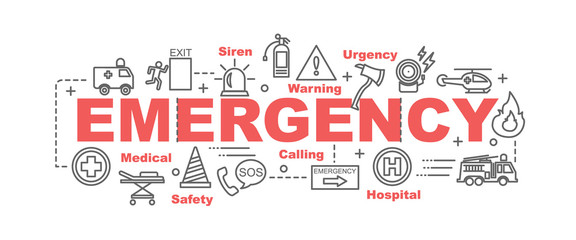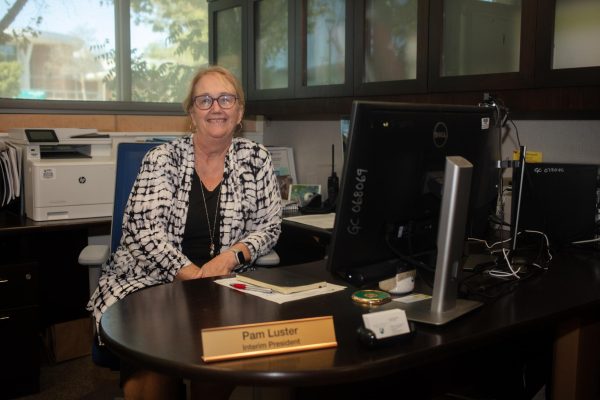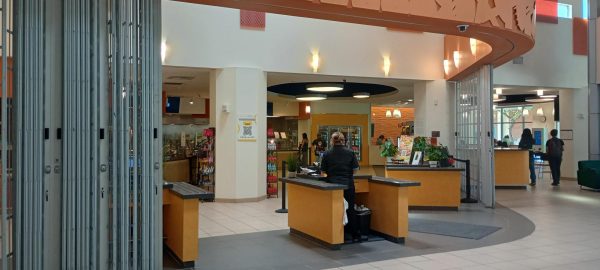Prepare for any Emergency

March 11, 2019
No campus is completely safe from the threat of danger, but being prepared can make a life or death difference.
There are a number of emergencies that can occur on campus such as fires, an armed intruder, earthquakes and more. The most important time to prepare is before an emergency arises. In class, students
and teachers seem more worried about the curriculum then stopping and talking about what to do in an emergency. Thankfully, there is tons of information on the Grossmont- Cuyamaca district website on public safety and emergency information open to students.
In order to have the best chance of surviving an emergency on campus, students should think ahead. Here are some ways to be better prepared:
• Think about where your classes are and the layouts of the buildings attended to plan possible escape routes.
• Read all student resources on emergency preparedness and attend safety training programs.
• Locate the nearest fire alarm and extinguisher, and know how to use them.
• Know that in any emergency, you will be notified in multiple ways including text message, voicemail, loud speaker, email and social media.
FIRE SAFETY
According to city-data.com, fires are El Cajon’s most common natural disaster. Grossmont College’s Director of Public Safety, Nicole Conklin emailed a response on fire drills stating that “yes” fire drills are held on campus. Yet, when talking to students, most have never heard of Grossmont having fire drills.
Grossmont student Julia Dorval, 27, has attended Grossmont for a total of three years and has “never once” been involved in a drill, or even been told about them. “We should be taught everything for safety and they haven’t even mentioned anything,”said Dorval in a phone interview.
In the event of a fire in your class’s building,
you should:
• Notify everyone around verbally.
• If able to, assist disabled persons to safety.
• Never use the elevator, use the stairs.
• Move to an outside area at least 150 feet from the affected area.
• Do not stay or move into an inner courtyard.
If you discover a fire on campus, call 911 immediately after warning those around you. If the fire is small and able to be put out, pull the fire alarm and notify the District Police.
ARMED INTRUDER
An armed intruder is a very serious emergency. The potential for a school shooting exists on every campus throughoutthe US. “Though the possession of firearmson or around the campus is prohibited,previous local and national shootings dictate the importance and need for a response plan,” according to active threat information
on the district website.
According to the FBI’s official website, “The FBI has designated 50 shootings in 2016 and 2017 as active shooter incidents (20 incidents occurred in 2016, while 30 incidents occurred in 2017).”
It seems that armed intruders are becoming more common, especially in schools.
According to a study released by the FBI, “Active shooter incidents are becoming more frequent—the first seven years of the study [2000-2007] show an average of 6.4 incidents annually, while the last seven years show 16.4
incidents annually…The largest percentage of incidents—45.6 percent—took place in a commercial environment (73 incidents), followed by 24.3 percent that took place in an
educational environment (39 incidents).”
An armed intruder is harder to plan for than any natural disaster. According to the district website, “An individual must use his/her own discretion during an active shooter event as to whether he/she chooses to run to safety or
remain in place.”
The best way to prevent an active shooter on campus is to report suspicious behavior. Even if your suspicions end up being wrong, it is better to be safe than sorry. There is an app that students can download called “Say Something,” which allows those who want to report suspicious behavior anonymously and do it quietly.
According to sdsheriff.net, “For a crime to occur, an opportunity has to exist and a motivated criminal has to be present.” In the event there is an active shooter onncampus, remember these three words: Run, hide, fight.
RUN: If you can escape, get to a safe place. Move or crawl away from gunfire. Think about where you are running to
before leaving and when you find or think of a safe place, duck and run to it. Leave all belongings behind except for your cell phone if possible.
HIDE: The best places to hide are locked rooms with minimal windows and with furniture to get behind. If you make it to a room, blockade the doors and windows as much as possible, lock doors, shut blinds, turn off lights, remain
quiet and silence cell phones. When hiding, try to spread out from others. Stay on the floor, away from doors
and windows.If it’s safe to do so, call 911 even if you think someone else already might have.
FIGHT: Before taking action, make a plan with others if possible. Make a total commitment and act as a team. Do whatever is necessary to survive “We have never had an active shooter at Grossmont or Cuyamaca colleges. However,
our law enforcement and emergency preparedness teams hold frequent active threat drills so we know what steps to take should that ever occur,” Conklin wrote.
Though we haven’t had an incident at Grossmont or Cuyamaca, it was just in 2001 that 15-year-old Andy Williams brought a gun to Santana High School in Santee, killing two students and injuring 13.
Conklin also emailed a response on teacher preparedness stating, “Teachers, staff and students are encouraged to attend the emergency training sessions that are held.”
“We strongly encourage faculty and staff to attend the sessions, but we can’t require it. Many employees have attended previous workshops, so they don’t necessarily have to attend every year,” emailed Anne Krueger,
Communications and Public Information Director from the Grossmont-Cuyamaca College District.
EARTHQUAKES
According to the Southern California Earthquake Center, there is a 60 percent chance of a 6.7 or greater earthquake
occurring in Southern California. Earthquakes are a common worry in Southern California and can happen at any
moment, even at school.
“Identifying potential hazards ahead of time and advance planning can reduce the dangers of serious injury or loss of life from an earthquake,” according to the Federal Emergency Management Agency (FEMA). Heavy storage should be moved into low units close to the ground and shelving units/fixtures should be well-secured to walls.
When an earthquake occurs, you should:
• Drop to the ground and take cover under a sturdy table or piece of furniture.
• Stay away from glass, windows and any fixtures that could fall on top of you.
• Stay inside until the shaking completely stops. Remember, there could be aftershocks.
• Be aware the electricity could go out.
• Do not use elevators. According to FEMA, “Research has shown that most injuries occur when people inside
buildings attempt to move to a different location inside the building or try to leave… Many of the 120 fatalities from the 1933 Long Beach earthquake occurred when people ran outside of buildings only to be killed by falling debris from collapsing walls.”
For more information on what to do in a specific emergency, visit gcccd.edu and look under “public safety.”













